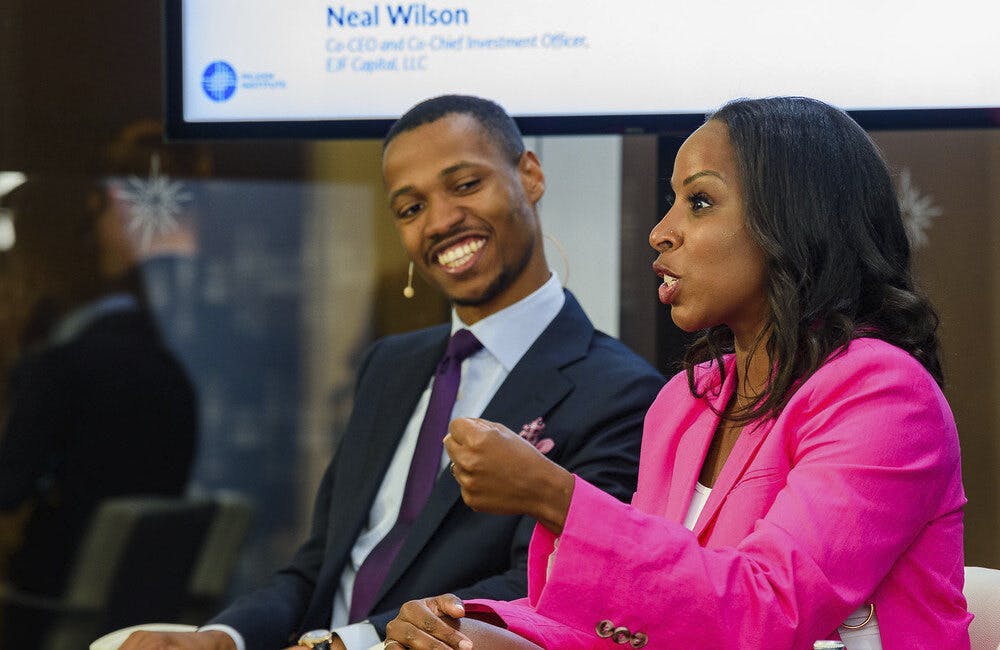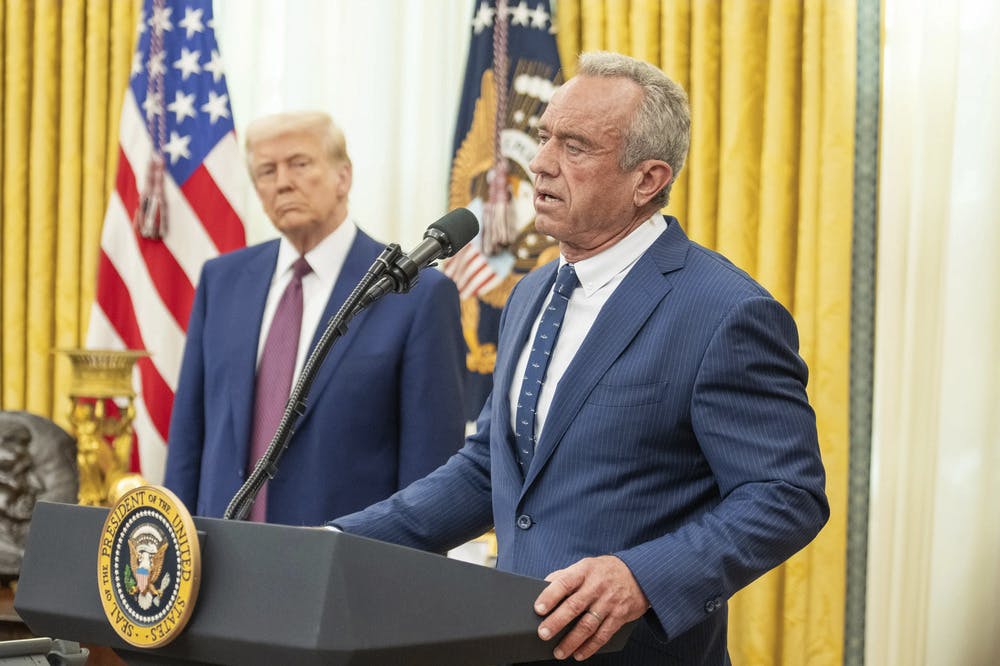TMF is Helping CIOs Refresh Websites, Modernize Immigration Processes
The Technology Modernization Fund is unlocking new tech initiatives as CIOs juggle competing priorities and budgets.

Chief information officers from the Department of Labor (DOL) and Office of Personnel Management (OPM) have leveraged the Technology Modernization Fund to modernize, streamline and improve access to customer-facing services with a website redesign and labor certification services.
The (TMF) has gained traction across government, and President Biden’s proposed fiscal year 2024 budget seeks to increase support for the program with an additional $200 million.
“We need to leverage the government’s buying power. It’s pretty great. We have an opportunity to improve the customer experience and accessibility for our team and staff by leveraging this power, and it’ll also help us expedite digital transformation across government,” Federal CIO Clare Martorana said during an event last year, where she touted many of the benefits of using TMF funds to kickstart technology projects across many use cases.
OPM Uses TMF for a Website Refresh
OPM is undergoing a massive IT transformation effort, backed by new strategic plans and TMF funding to modernize the agency and streamline its services.
At the end of 2022, OPM released its strategic plan in which OPM CIO Guy Cavallo worked with the agency’s CDO to create a new data strategy. Cavallo is currently developing a new IT Strategic Plan for fiscal year 2023 to 2026.
“We’re in the final stages of 508 compliance before you’ll see our new strategic plan up on the website. So, for the vendor community that wants to know where’s my best fit at OPM, you have the agency strategy, you have our data strategy, and very soon you’ll have our IT strategy. For those of you that know me — surprise, surprise — it says go to the cloud. That’s what we’re doing,” Cavallo said during ATARC’s GITEC Conference 2023 Monday.
At the end of last year, OPM was awarded $6 million from TMF to update both the technology behind and the content on the opm.gov website to improve and optimize the user experience. With approximately 20,000 pages and 3,600 dead links, users have had trouble navigating the site, using the tools effectively and finding information they need.
“We did get an award to rebuild opm.gov, which I would vote is one of the worst websites in federal government,” Cavallo said. “It’s an on-premise environment that’s going to the cloud. Meanwhile, while we’re working with the TMF board, getting our money and getting our processes in place, we’re still trying to improve the site that people go to every day.”
Under the project, OPM will implement a modern and more secure content management system (CMS) hosted in OPM’s enterprise cloud environment, providing users with intuitive and accessible web tools. Cavallo said the agency is focusing on four key cases: supporting federal employees working for government, retirees from government, citizens looking to work for the government and HR offices searching for OPM policies.
Recently, OPM launched a new chatbot for the website to answer retirement questions. OPM leveraged some best practices from the Department of Veterans Affairs with the launch of VA’s chatbot, which has taken about 4% of the calls from the agency’s call center.
“Anything I can do to remove calls from the call center, which is our area that we need to improve the most at OPM, is worth it. So, we’re trying to get those basics,” Cavallo said. “I need you to go use that chatbot because we are looking at what questions are being asked to the chatbot that we don’t have an answer to, and you can help us prioritize those answers. We’re about 50 questions and answers today. We think we have to get up to about 800 to 1,000 to really be effective.”
Labor’s Visa Modernization Project
DOL has been awarded funding for three projects under the TMF, including the Labor Certificate Processing Modernization, Data Modernization and PERM Visa Modernization. A fourth is in the works, said CIO Gundeep Awhluwalia during the ATARC conference Monday.
Labor processes nearly 120,000 requests for permanent labor certification across 73,000 unique employers annually. DOL’s current system for permanent labor certification services has caused poor customer experience for digitally accessing permanent labor certification services, inconsistent case processing times, and increased fraud and security risks since it relies on a paper-based process to manage services.
Under the PERM Visa Modernization project, DOL is focusing on making the immigration process fully digitized journey, creating a more seamless immigrant visa-processing experience with the departments of Homeland Security and State.
“Depending on the priority date we issue you, your immigration journey into the country could be anywhere between three years to maybe 10. That’s the kind of difference it makes. So that latest TMF award digitizes the PERM process for which every immigrant has to take to get their green cards,” Awhluwalia said.
The updated system aims to integrate a modernized PERM labor certification process into DOL’s Foreign Labor Application Gateway (FLAG) digital platform, which uses GSA’s Login.gov services and enables the secure and efficient sharing of labor certification data across the multi-agency visa processing lifecycle through its Interagency DataHub.
“My hope is that in a year’s time, it will all be digital. All of these go to USCIS, which is the next step in the process,” Awhluwalia said. “Once we have digitized this process, that immigrant journey will be more digitized, and we will pass the information along to others. That’s the kind of reform that we want to bring to each and every business process at Labor, and we’re trying to accelerate that as quickly as possible.”
With TMF funding and support, DOL will transform three processes: PERM filers submitting applications, PERM analysts reviewing applications and submitting PERM labor certification decisions to USCIS and State.
DOL also has re-engineered its business processes to eliminate manual and paper-based processes. This modernization will enable analysts to create and issue correspondence to filers and automate the audit selection process for integrity reviews. DOL anticipates a saving $2.2 million annually by reducing physical document storage, which will help DOL pay its TMF loan.
“It is an important tool that you should bring into the ecosystem because it’s like a loan. Now a few of the new ones, and in the fourth one in the hopper we have, the TMF board is also allowing for a grant kind of construct if there is not enough savings that emerge out of it,” Awhluwalia said. “For our labor certificate process, I will stop importing this currency paper, I will stop doing printing in my Atlanta and Chicago offices, so I’ll have offsets to pay the TMF board back, and then the program can keep that offset after that loan is repaid.”
This is a carousel with manually rotating slides. Use Next and Previous buttons to navigate or jump to a slide with the slide dots
-

Trump Executive Order Boosts HBCUs Role in Building Federal Tech Workforce
The executive order empowers HBCUs to develop tech talent pipelines and expand access to federal workforce opportunities.
3m read -

Tracking CIOs in Trump's Second Term
Stay informed on the latest shifts in federal technology leadership as new CIOs are appointed and President Trump's second term takes shape.
6m read -

DOL Turns to Workforce Development to Maintain AI Superiority
DOL is bridging the AI skills gap through partnerships and upskilling to ensure future AI workforce readiness.
10m watch -

Trump’s Executive Order Spurs Federal Push for AI Literacy
Agencies are ramping up AI literacy efforts across the federal workforce and education systems after Trump's executive order on AI education.
5m read -

White House AI Czar Outlines Industry's Role in Global AI Race
White House AI Czar David Sacks detailed the Trump administration's AI priorities and industry's role in growing the nation's AI economy.
3m read -

CIA's Future Relies on Human-AI Collaboration, CAIO Says
From data triage to agentic AI, Lakshmi Raman details how human expertise remains paramount for national security applications.
3m read -

Opinion: AI Is Reshaping Government, Can Contractors Keep Up?
To compete in the new AI-driven public sector, contractors must demonstrate the one thing machines can’t deliver: human originality.
4m read -

AI Growing in Focus Amid HHS Restructure
Department of Health and Human Services officials see promise in artificial intelligence amid efficiency goals.
4m read -

Rep. Gerry Connolly Leaves Lasting Mark on Federal Tech
Connolly's leadership in Congress significantly advanced government IT, emphasizing accountability, efficiency and a robust cybersecurity posture.
4m read -

Agencies Use AI to Boost Efficiency, Cybersecurity Under White House Mandates
DLA and GAO are investigating how AI can boost efficiency and bolster cybersecurity as agencies align with the president's tech directives.
3m read -

Federal Agencies Tout Tech in President Trump’s First 100 Days
Defense modernization and health care restructuring landed among some of the key IT highlights within the president's first few months.
6m read -

Technology Modernization Drives a More Efficient Government
Federal agencies are modernizing tech, data and cybersecurity to streamline operations, boost efficiency and improve government services.
20m read
















